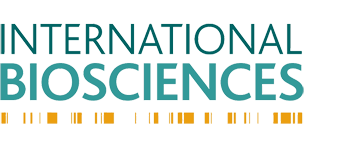Glossary of terms
A
A: Adenine: One of the four nucleobases found in DNA. Adenine (A) always pairs with thymine (T).
Allele: Alternate sequences for a particular position in the genome
Ancestry: Line of descent, therefore a person, plant, animal or object that is related to one existing at a later point in time
Anthropology: The study of the human race, its culture and society and its physical development
Avuncular: Of or having to do with an uncle
C
C: Certified laboratory: Officially recognised as meeting the essential requirements of a quality management system, a scientific facility equipped to conduct tests and investigations
Chromosome: Any of the rod-like structures found in all living cells, containing the chemical patterns which control what an animal or plant is like
Cytosine: One of the four nucleobases found in DNA. Cytosine (C) always pairs with guanine (G)
D
D: Demography: The statistical study of human populations especially with reference to size and density, distribution, and vital statistics
DNA: deoxyribonucleic acid: the chemical at the centre of the cells of living things, which controls the structure and purpose of each cell and carries the genetic information during reproduction
Dominant: The description of a gene in a pair of genes that will produce a particular characteristic, regardless of the characteristic of the paired gene
Double Helix: The shape that two linear strands of DNA assume when bonded together
F
F: Fraternal: Relating to brothers
G
G: Gene: The basic unit of heredity; a sequence of DNA nucleotides on a chromosome
Gene frequency: The relative occurrence of a particular allele in a population
Gene mapping: Determination of the relative positions of genes on a DNA molecule (chromosome or plasmid) and of the distance, in linkage units or physical units, between them
Genetics: The study of inheritance and the variation of inherited characteristics
Guanine: One of the four nucleobases found in DNA. Guanine (G) always pairs with cytosine (C)
H
H: Heredity: The process of passing on physical characteristics from one generation to the next
I
I: Immigration: The process of examining your passport and other documents to make certain that you can be allowed to enter the country, or the place where this is done
Infidelity: (An act of) having sex with someone who is not your husband, wife or regular sexual partner, or (an example of) not being loyal or faithful
ISO 17025: An International Standard (published by the International Organization for Standardization) that specifies the general requirements for the competence to carry out tests and/or calibrations
L
L: Locus (pl. loci): The specific physical location of a gene on a chromosome
M
M: Marker: A gene of known location on a chromosome and phenotype that is used as a point of reference in the mapping of other loci
Maternity: Related to pregnancy and birth
Megabase (Mb): Unit of length for DNA fragments equal to one million nucleotides
Midwifery: The techniques and practice of a midwife, a woman who is trained to assist women in childbirth
Mutation: Any inheritable change in DNA sequence
P
P: Paternity: the fact of being a father or connected with being a father
Physical map: A map of the locations of identifiable landmarks on DNA. Distance is measured in base pairs
Polymorphism: Difference in DNA sequence among individuals. Genetic variations occuring in more than 1% of a population would be considered useful polymorphisms for linkage analysis
Pregnancy: the period from conception to birth when a woman carries a developing fetus in her uterus
Profiling: the activity of collecting information about someone, especially a criminal, in order to give a description of them
Protein: A large molecule composed of one or more chains of amino acids in a specific order; the order is determined by the base sequence of nuceotides in the gene coding for the protein. Proteins are required for the structure, function, and regulation of the body cells, tissues, organs, and each protein has unique functions
R
R: Resolution: Degree of molecular detail on a physical map of DNA
S
S: Semen: the thick white fluid containing spermatozoa that is ejaculated by the male genital tract
Sequencing: Determination of the order of nucleotides (base sequences) in a DNA or RNA molecule or the order of amino acids in a protein
Sex chromosomes: Chromosomes that are different in the two sexes and involved in sex determination
Swab: a small piece of soft material used for cleaning a cut or for taking a small amount of substance from a body, or the substance itself which can then be tested
T
T: Thymine: a pyrimidine base; one of the four molecules containing nitrogen present in the nucleic acids DNA and RNA; designated by letter T
X
X: X-chromosome: a sex chromosome which exists as a pair in the cells of females and with a Y-chromosome in the cells of male animals
Y
Y: Y-chromosome: a sex chromosome that exists only in male cells
Y-STR: short tandem repeats located on the Y chromosome

